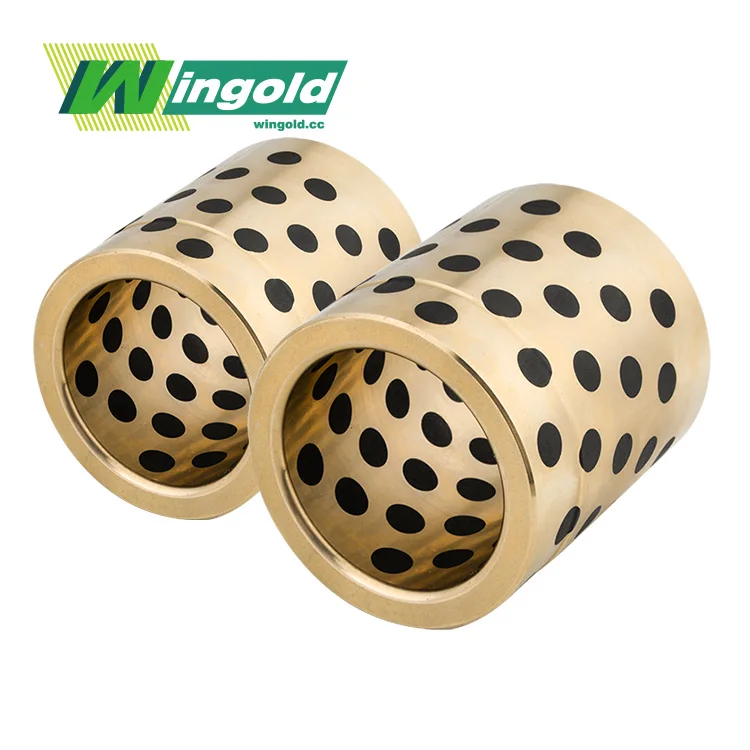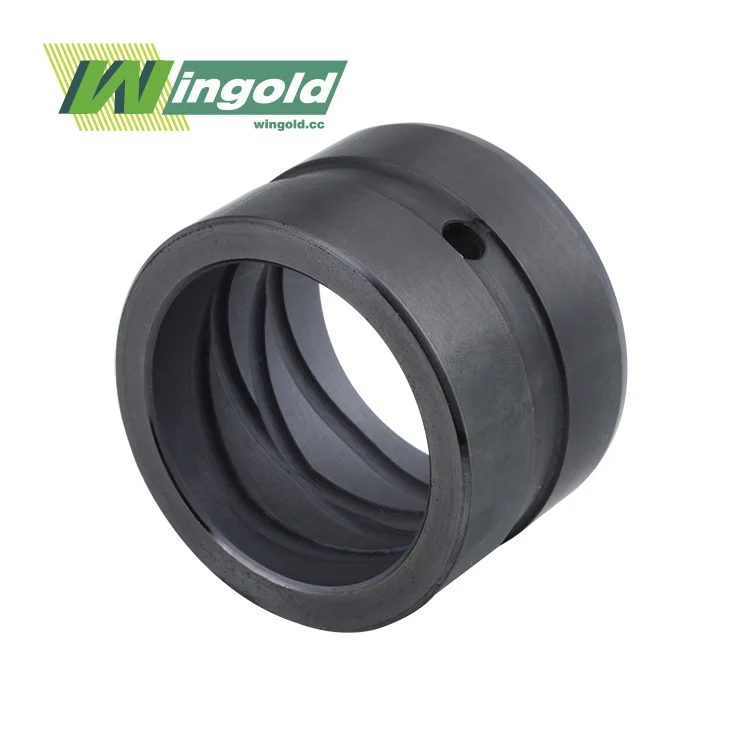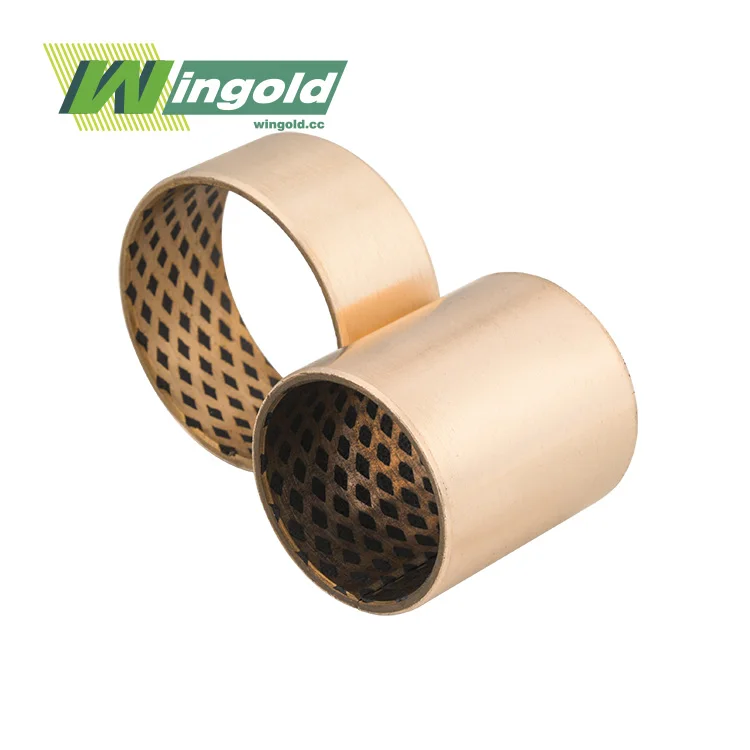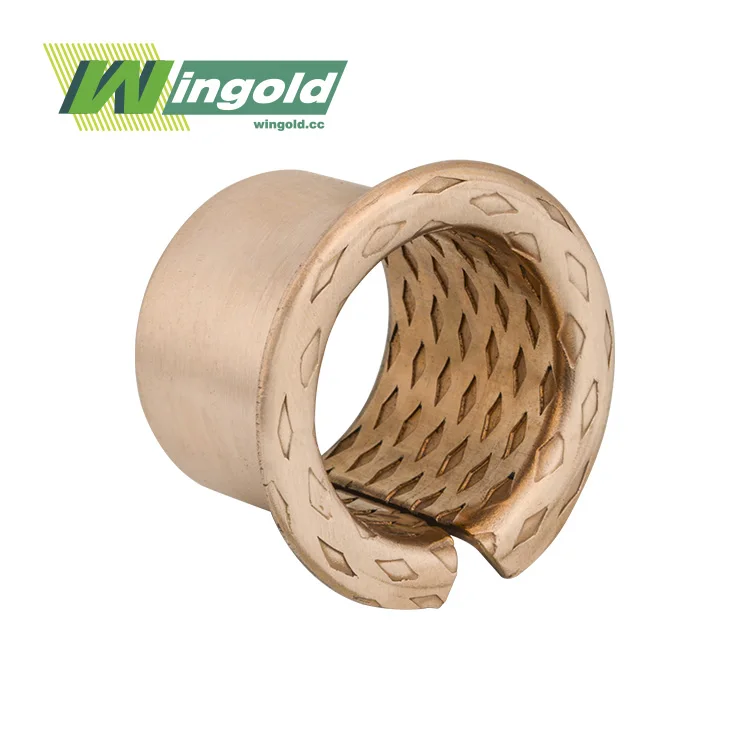
Advantages of PTFE Lined Bushings in Chemical Processing
PTFE lined bushings offer numerous benefits that make them particularly suitable for use in chemical processing plants. Their unique construction and material properties contribute to enhanced performance and longevity in challenging environments.
Chemical Resistance
One of the standout features of PTFE lined bushings is their exceptional chemical resistance. PTFE is renowned for its inertness to a wide range of chemicals, including acids, bases, and solvents. This property makes these bushings ideal for use in chemical processing plants where exposure to corrosive substances is common. The PTFE lining acts as a protective barrier, preventing chemical attack on the metal backing and ensuring the bushing maintains its structural integrity over time.
Low Friction and Wear Resistance
PTFE lined bushings boast remarkably low friction coefficients, typically ranging from 0.02 to 0.08. This low friction translates to reduced wear and energy consumption in chemical processing equipment. The self-lubricating nature of PTFE eliminates the need for external lubrication, which is particularly advantageous in environments where contamination must be avoided. The wear-resistant properties of PTFE also contribute to extended service life, reducing downtime and maintenance costs.
Temperature Tolerance
Chemical processing often involves extreme temperatures, and PTFE lined bushings are well-equipped to handle these conditions. With an operating temperature range of -200°C to +280°C, these bushings maintain their performance characteristics across a broad spectrum of thermal environments. This wide temperature tolerance ensures consistent operation in both cryogenic applications and high-temperature chemical reactions.
Load-Bearing Capacity
Despite the soft nature of PTFE, PTFE lined bushings offer impressive load-bearing capabilities. The metal backing provides structural support, allowing these bushings to withstand significant pressures. With a maximum load pressure of up to 140N/mm², they can handle the demanding conditions often encountered in chemical processing equipment.
Specific Applications in Chemical Processing Plants
PTFE lined bushings find numerous applications throughout chemical processing plants, contributing to the efficient and safe operation of various equipment and systems.
Pumps and Valves
In chemical processing plants, pumps and valves are critical components that often handle corrosive or abrasive fluids. PTFE lined bushings are extensively used in these applications due to their chemical resistance and low friction properties. In centrifugal pumps, for instance, these bushings serve as wear rings, helping to maintain efficient operation and reduce leakage. In valve stems and seats, PTFE lined bushings provide smooth operation and excellent sealing properties, crucial for controlling the flow of chemicals.
Agitators and Mixers
Chemical processing often requires thorough mixing of substances, and agitators play a vital role in this process. PTFE lined bushings are employed in agitator shafts and impellers, where they must withstand both chemical exposure and mechanical stress. The low friction coefficient of these bushings helps reduce power consumption and ensures smooth rotation, even in high-viscosity mixtures. Their self-lubricating nature is particularly beneficial in applications where contamination from external lubricants must be avoided.
Heat Exchangers
Heat exchangers are ubiquitous in chemical processing plants, facilitating temperature control in various processes. PTFE lined bushings find application in the support systems of heat exchanger tubes, where they must contend with thermal expansion and contraction while resisting chemical attack. The temperature tolerance of these bushings, combined with their low friction properties, helps maintain alignment and reduce wear in these critical components.
Conveyor Systems
Chemical processing plants often utilize conveyor systems to transport raw materials, intermediate products, or finished goods. PTFE lined bushings are employed in conveyor rollers and idlers, where they must withstand exposure to chemical spills and dust. The self-lubricating nature of these bushings helps maintain smooth operation in environments where regular maintenance may be challenging or hazardous.
Considerations for Implementing PTFE Lined Bushings
While PTFE lined bushings offer numerous advantages in chemical processing applications, several factors should be considered to ensure optimal performance and longevity.
Environmental Compatibility
Although PTFE is resistant to a wide range of chemicals, it's essential to verify compatibility with specific substances present in the application. Some highly aggressive chemicals or extreme conditions may affect the performance of PTFE lined bushings. Consulting with manufacturers or conducting compatibility tests can help ensure the bushings are suitable for the intended environment.
Load and Speed Limitations
PTFE lined bushings have specific load and speed limits that must be respected to prevent premature wear or failure. The maximum PV value (pressure-velocity) is a critical parameter to consider, with dry running applications typically limited to 3.8N/mm²·m/s. For applications involving higher loads or speeds, alternative materials or designs may be necessary.
Installation and Maintenance
Proper installation is crucial for the performance of PTFE lined bushings. Care must be taken to avoid damaging the PTFE layer during installation, as this could compromise its effectiveness. While these bushings are generally low-maintenance, periodic inspection for wear or damage is recommended, especially in critical applications.
Thermal Expansion
The difference in thermal expansion coefficients between the PTFE lining and the metal backing should be considered, particularly in applications involving significant temperature fluctuations. Proper design and selection of bushing dimensions can help mitigate potential issues related to thermal expansion.
Cost Considerations
While PTFE lined bushings may have a higher initial cost compared to some alternatives, their long-term benefits often justify the investment. Reduced maintenance requirements, extended service life, and improved equipment performance can lead to significant cost savings over time. A thorough cost-benefit analysis, considering factors such as downtime reduction and improved process efficiency, can help in making informed decisions.
Conclusion
PTFE lined bushings have proven to be invaluable components in chemical processing plants, offering a unique combination of chemical resistance, low friction, and durability. Their versatility allows for application in various equipment types, from pumps and valves to agitators and conveyor systems. By carefully considering the specific requirements of each application and adhering to proper installation and maintenance practices, chemical processing facilities can leverage the benefits of PTFE lined bushings to enhance operational efficiency, reduce maintenance costs, and improve overall plant performance. As the chemical industry continues to evolve, these innovative bushings are likely to play an increasingly important role in ensuring safe and efficient operations. For more information on how PTFE lined bushings can benefit your chemical processing operations, please contact us at info@wingold.cc.
FAQ
What is the maximum operating temperature for PTFE lined bushings?
PTFE lined bushings can typically operate in temperatures ranging from -200°C to +280°C, making them suitable for a wide range of chemical processing applications.
Are PTFE lined bushings suitable for use with abrasive materials?
While PTFE lined bushings offer good wear resistance, their suitability for highly abrasive environments may be limited. For extremely abrasive applications, alternative materials or specialized coatings might be more appropriate.
How often should PTFE lined bushings be replaced in chemical processing equipment?
The replacement interval for PTFE lined bushings depends on various factors, including the specific application, operating conditions, and maintenance practices. Regular inspections and monitoring of equipment performance can help determine the optimal replacement schedule.



